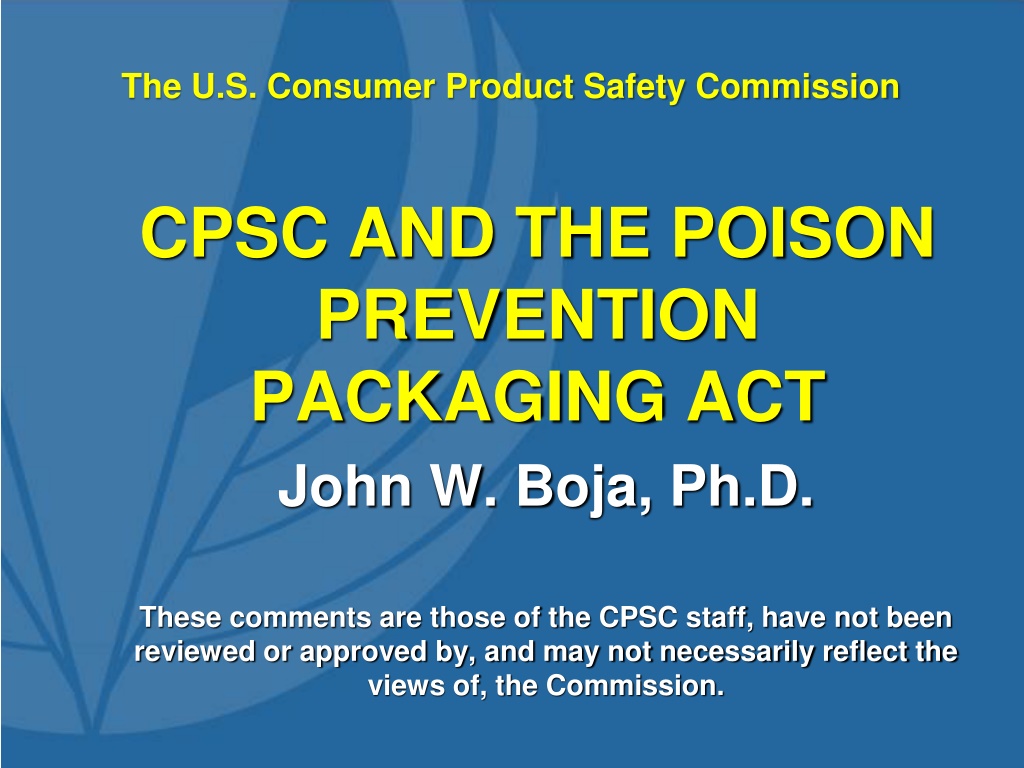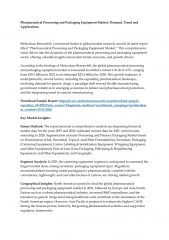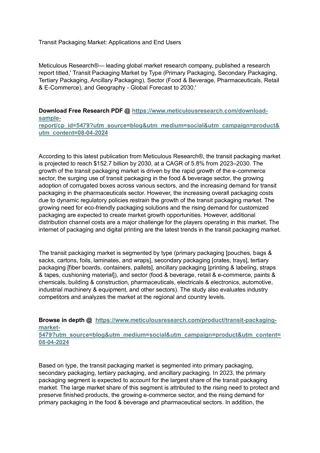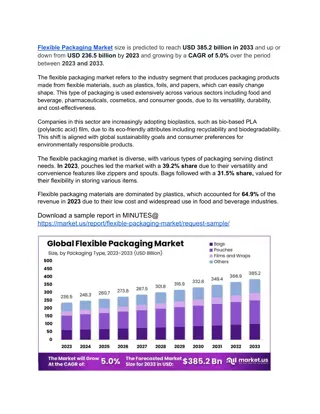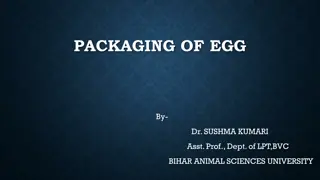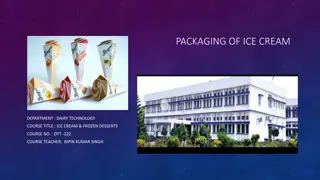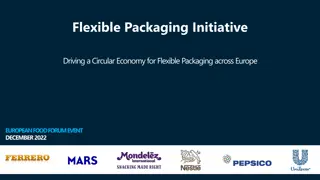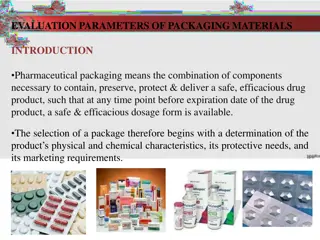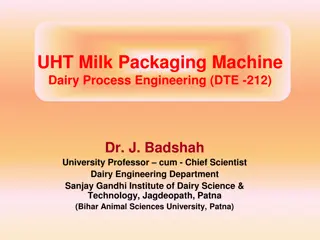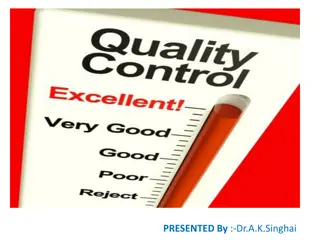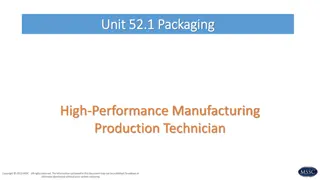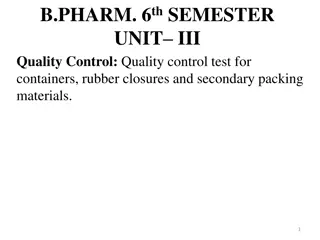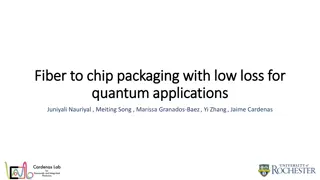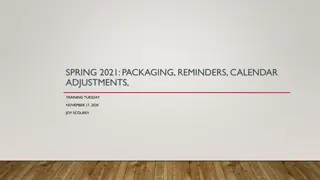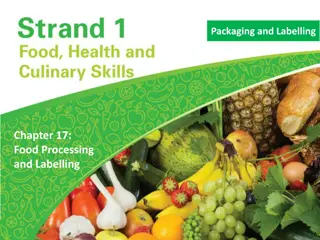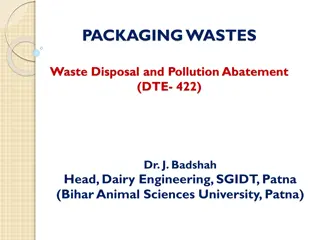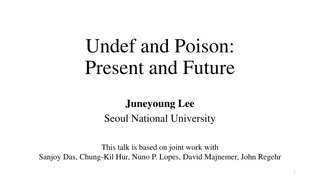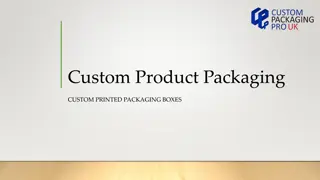Understanding the Poison Prevention Packaging Act
The Poison Prevention Packaging Act aims to safeguard children from injuries or illnesses caused by hazardous household substances. It mandates special packaging that is difficult for young children to open, yet easily accessible for adults to use safely. The Act covers a wide range of substances commonly found in households, emphasizing the importance of responsible packaging to prevent accidents.
Download Presentation

Please find below an Image/Link to download the presentation.
The content on the website is provided AS IS for your information and personal use only. It may not be sold, licensed, or shared on other websites without obtaining consent from the author. Download presentation by click this link. If you encounter any issues during the download, it is possible that the publisher has removed the file from their server.
E N D
Presentation Transcript
The U.S. Consumer Product Safety Commission CPSC AND THE POISON PREVENTION PACKAGING ACT John W. Boja, Ph.D. These comments are those of the CPSC staff, have not been reviewed or approved by, and may not necessarily reflect the views of, the Commission.
Poison Prevention Packaging Act To protect children from serious personal injury or serious illness resulting from handling, using or ingesting hazardous household substances.
Household Substances Customarily produced or distributed for sale for consumption or use, or customarily stored, by individuals in or about the household and which are-
Household Substances (cont.) A. A hazardous substance as defined by the Federal Hazardous Substances Act (FHSA); B. Foods, Drugs, or Cosmetics as defined by the Federal Food, Drug, and Cosmetics Act (FD&CA); or C. Substances intended for use as a fuel when stored in a portable container and used in the heating, cooking, or refrigeration system of a house. 15 U.S.C. 1471(2)
What Is a Package? The term package means the immediate container or wrapping in which any household substance is contained for consumption, use, or storage in or about the household 15 U.S.C. 1471(3)
PPPA Findings the degree or nature of the hazard to children in the availability of such substance, by reason of its packaging, is such that special packaging is required to protect children from serious personal injury or serious illness resulting from handling, using, or ingesting such substance 15 U.S.C. 1472(a)(1)
PPPA Findings the special packaging to be required by such standard is technically feasible, practicable, and appropriate for such substance. 15 U.S.C. 1472(a)(2)
Special Packaging Packaging that is designed or constructed to be significantly difficult for children under five years of age to open or obtain a toxic or harmful amount of the substance contained therein within a reasonable time and not difficult for normal adults to use properly.. 15 U.S.C. 1471(4)
Special Packaging Nothing in this Act shall authorize the Commission to prescribe specific packaging designs, product content, package quantity, or, with the exception of authority granted in section 4(a)(2) of this Act [15 U.S.C. 1473(a)(2)], labeling. 15 U.S.C. 1472(d)
Substances currently included in 16 CFR 1700.14 ethylene glycol fluoride furniture polish glue removers containing acetonitrile hydrocarbons kindling and/or illuminating preparations methacrylic acid methyl alcohol mouthwash containing ethanol permanent wave neutralizer containing sodium or potassium bromate sodium and potassium hydroxide solvents for paint or other coating material sulfuric acid turpentine
Exceptions Not Used In/Around the Household Institutional Use Hospitals, Nursing Homes Professional Use
Exceptions (cont.) Prescription Bulk Drugs Repackaged by the Pharmacist Requested by Patient or Physician Section 4 allows limited use of non- complying packaging 15 U.S.C. 1473 Exempted (16 CFR 1702) 16 CFR 1700.14(a)(10)(i)-(xxi)
Exceptions (cont.) OTCs - Household Products One size Labeled (16 CFR 1700.5) This Package For Households Without Young Children Package Not Child-Resistant Other popular sizes are CR Imposed exclusive CR Drain cleaners (16 CFR 1500.17(a)(4))
Packaging Test Methods Child Test - 16 CFR 1700.20(a)(2) Panels of 50 children (42-51 months) Tester restriction - 30% children Site restriction - 20% children 5 minutes - demo - Teeth - 5 minutes Sequential Pass/Fail Table 16 CFR 1700.20(a)(2)(iii) 80% after 200 children
SEQUENTIAL TEST Test Panel # Children Tested Package Openings (Full 10 minutes) Pass Continue Fail 1 2 3 4 50 100 150 200 0-5 6-15 16-25 26-40 6-14 16-24 36-34 --- 15+ 25+ 35+ 41+
Packaging Test Methods Senior Test -16 CFR 1700.20(a)(3) 100 adults (50-70 years old) Site restriction (24%) Tester restriction (35%) 5 minute/1 minute test period Screening 90% effectiveness
Consumer Product Safety Improvement Act (CPSIA) Under Section 102 a general certification requirement has been extended to products subject to any similar rule, standard, ban, or regulation under any Act enforced by the Commission. General conformity certifications do not need to be based on testing done by a third-party laboratory. Certification must be based on a test of the product or a "reasonable testing program.
Does Required Special Packaging Need Certification? YES! The PPPA requires special packaging for certain substances. Special packaging must meet the performance specifications of 16 C.F.R. 1700.15. The importer or the domestic party that packages any substance that requires special packaging must certify that the special packaging meets the performance specifications of 16 C.F.R. 1700.15.
GENERAL CONFORMITY CERTIFICATION 1. Identification of the product 2. Citation to each CPSC product safety regulation applicable 3. Identification of the U.S. importer or domestic manufacturer 4. Contact information for the individual maintaining records of test results
GENERAL CONFORMITY CERTIFICATION (cont.) 5. Date and place where the product was manufactured 6. Date and place where the product was tested for compliance with the regulation(s) cited above 7. Identification of any laboratory on whose testing the certificate depends For complete instructions and more information see: http://www.cpsc.gov/about/cpsia/faq/elecertfaq.pdf
Additional Information http://www.cpsc.gov/en/Regu lations-Laws-- Standards/Statutes/Poison- Prevention-Packaging-Act/ Poison Prevention Packaging Act Regulations PPPA Guidance Documents Further Information on the PPPA General Information on Poison Prevention
Additional Information on the CPSIA Section 102 Certification and the Poison Prevention Packaging Act http://www.cpsc.gov/en/Regulations-Laws-- Standards/Statutes/Poison-Prevention- Packaging-Act/PPPA-FAQ/
If you have questions about PPPA: John Boja 301-504-7300 e-mail jboja@cpsc.gov Carol Afflerbach 301-504-7529 email cafflerbach@cpsc.gov Mary Toro 301-504-7586 e-mail mtoro@cpsc.gov
